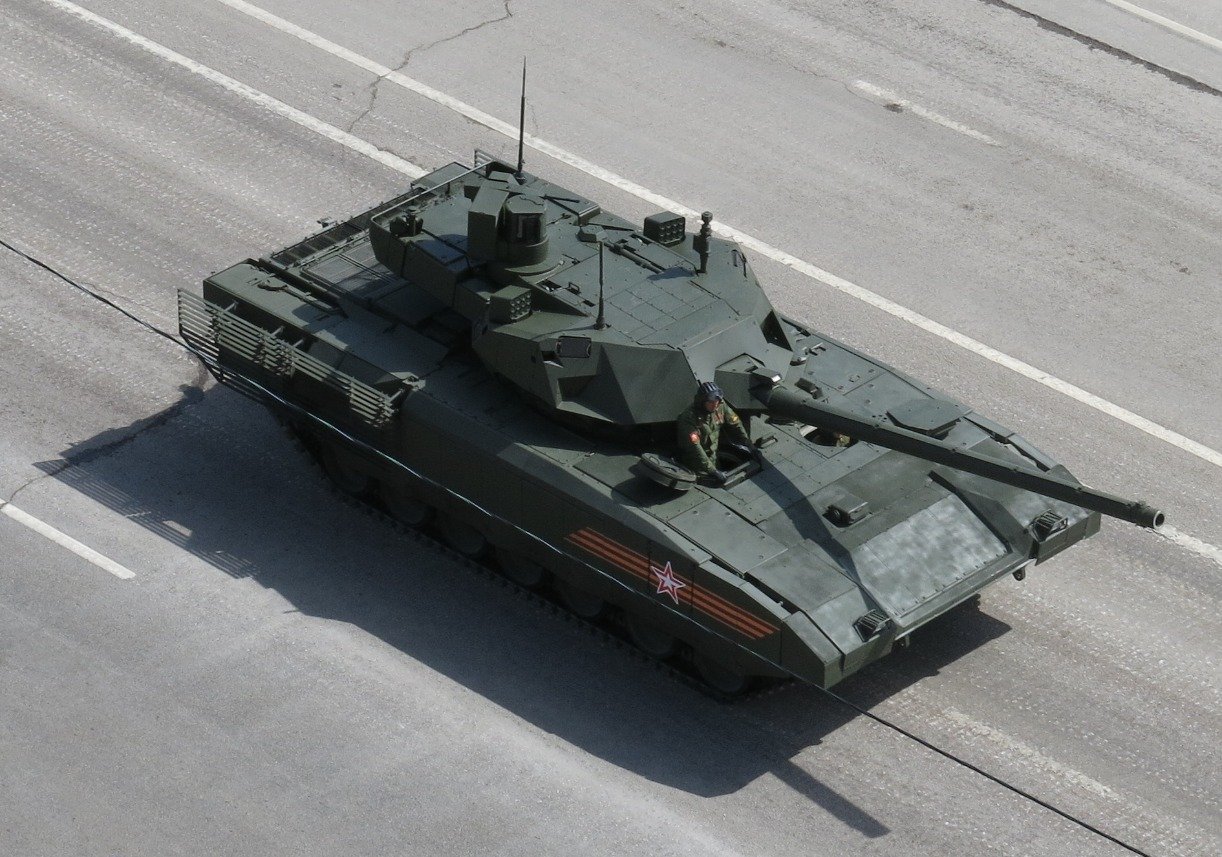Russia’s T-95 Tank Would Have Been a Real Beast on the Battlefield
The T-95 tank was a far more refined product than other tank models the Soviets had deployed throughout the Cold War. Nonetheless, the tank never left the drawing board.
Summary: The Soviet T-95 was a proposed main battle tank (MBT) designed during the Cold War's later stages, aimed to dominate NATO forces through superior firepower and armor. Featuring a 152mm cannon and a remote-controlled turret, the T-95 was envisioned to enhance crew survivability—a significant shift in Soviet tank design philosophy.

-However, complexities and high costs stymied its production, and the project lingered through the dissolution of the Soviet Union. Post-Soviet Russia attempted to continue development but eventually integrated many of the T-95's advanced concepts into the newer T-14 Armata.
-Despite the innovative design, the T-14 Armata's deployment has been cautious, with Russian forces hesitant to risk such advanced tanks in combat, particularly in the ongoing conflict in Ukraine.
The Cold War produced some incredible weapons, many of which are still with us today. Yet for every successful weapons platform or new technology, many more systems never came to be.
One such platform was the Soviet T-95.
This system, first proposed in 1988, was designed to punch through NATO armor if and when the Cold War turned hot and Soviet forces needed to storm through the Fulda Gap. The T-95 was brutality and excess rolled into one. It was, therefore, well matched to the moment in which it was conceived. For the Soviet Union, 1988 was a schizophrenic combination of brutality and excess on one side, and decline and poverty on the other.
The T-95 Specs
Consider the specs on the proposed tank. This beast had a 152mm cannon. It possessed a remote-controlled turret. The T-95 had next-generation, enhanced armor that most Red Army designers believed would allow it to survive in combat against even the most advanced American main battle tank (MBT).
One of the most important aspects of the T-95 was that it represented a total change in thinking by Soviet designers. They were now suddenly quite concerned about the survivability of tank crews (hence the enhanced armor).
The T-95 was a far more refined product than other tank models the Soviets had deployed throughout the Cold War. Its complexity meant that building the tank in numbers would be complicated and expensive.
Most importantly, the Soviets removed the autoload feature from this MBT. Almost every Soviet MBT possessed an autoload system. What this meant was that munitions could be loaded and reloaded at an extremely fast clip while in combat. Instead of having a crewmember lug heavy shells from storage to the cannon, an autoloader would do the heavy lifting.
But the autoloaders that Russia built were notoriously inefficient. The slightest misalignment between the autoloader and the tank gun meant that the whole system froze up, leaving the tank vulnerable to enemy attack.
A tank in combat is known to shake and rattle about. Misalignments of the autoloader were quite common. Despite decades of experience with the inefficiency of the autoloader, though, Red Army tank designers persisted in building their platforms with this dangerous feature.
Not the T-95. The Soviets were finally thinking bigger and better.
T-95 Development Hell
Real work on the tanks did not begin until after the fall of the Soviet Union. In 1995, Russia began building this system. The T-95 would not only be equipped with a traditional artillery-firing 152mm smoothbore cannon, but it would fire over-the-horizon guided missiles, as Brent Eastwood analyzed.
Further, it is likely that this platform’s armor would have withstood the Javelin anti-tank missiles that NATO equipped the Ukrainians with after Russia invaded in February 2022. Had the Russians possessed the T-95, it would have made a difference in Ukraine.
Work continued on the T-95 until 2009. Moscow wanted to deploy this war beast against the Chechens to break their will in the Second Chechen War. Ultimately, the program proved to be far too unwieldy for the Russian defense industrial base. Instead, much of the design for the T-95 was folded into the truly revolutionary T-14 Armata tank.
The T-95 Program Became the T-14 Armata
Today, there are just over 100 Armatas in existence. But the T-14s are so expensive and complex to produce that the Russian military fears losing them in combat against the Ukrainians. Rather than risk the humiliation of losing such costly systems in combat, Russia has kept these tanks out of frontline combat, relying instead on older Soviet-era MBTs such as the T-90M and the T-72.

Basically, Russia wasted precious time and resources reinventing the wheel by building the T-14, when they could have just completed the T-95 program. Thankfully for the Ukrainians and NATO, Russia missed the opportunity to build a truly superior tank.
About The Author
Brandon J. Weichert is a former Congressional staffer and geopolitical analyst who is a contributor at The Washington Times, as well as at American Greatness and the Asia Times. He is the author of Winning Space: How America Remains a Superpower (Republic Book Publishers), Biohacked: China’s Race to Control Life, and The Shadow War: Iran’s Quest for Supremacy. Weichert can be followed via Twitter @WeTheBrandon.


